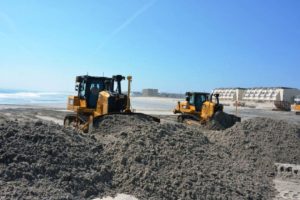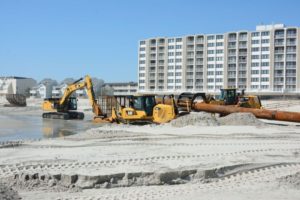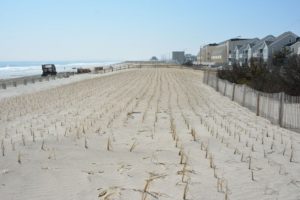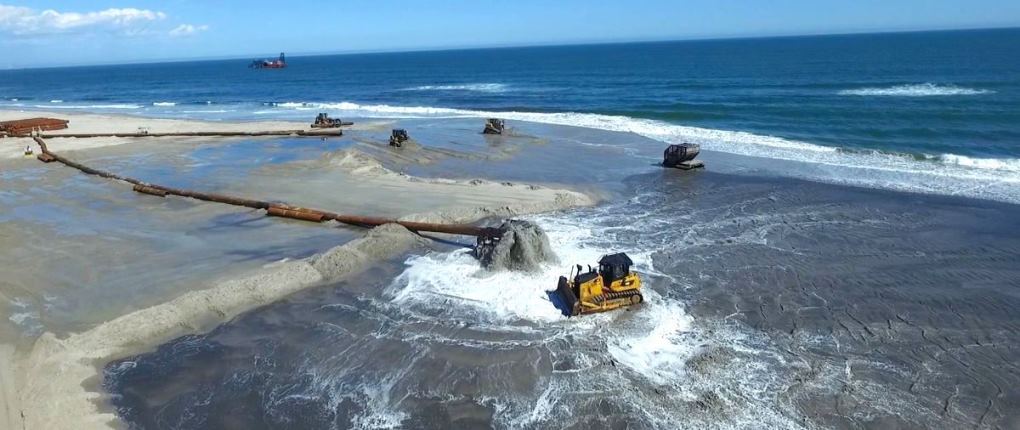When most people think of bulldozers, they think of two things: the Caterpillar® brand, and environmental destruction. Caterpillar, Inc. wants to balance that perception, showing bulldozers can also restore.
The following is excerpted from a promotional page on the Caterpillar, Inc. website. This Fortune 500 company is just one of many that’s discovering the vast commercial opportunities in the global Restoration Economy, as the world shifts from destructive development to restorative development:
***************
 As world population explodes from seven to nine billion over the next few decades, and demand for food, clean air and clean water intensifies, sustainable natural infrastructure (forests, prairies, agricultural lands, coastal landscapes and wetlands) will become even more critical.
As world population explodes from seven to nine billion over the next few decades, and demand for food, clean air and clean water intensifies, sustainable natural infrastructure (forests, prairies, agricultural lands, coastal landscapes and wetlands) will become even more critical.
Caterpillar is taking a proactive global leadership role, advocating sustainable natural infrastructure on projects like the restoration of the New Jersey shoreline.
When Superstorm Sandy crashed into the Jersey shore, it caused unprecedented devastation, stripping beach widths by 30 to 40 feet and inflicting over $30 billion in damage. Shortly thereafter, Hurricane Joaquin struck the shore causing further damage. Then earlier this year, winter storm Janos struck, once again wreaking havoc on the Jersey shore.
 A massive, multi-million dollar Army Corps of Engineers project to restore the beach and the natural infrastructure has been ongoing since shortly after Sandy subsided.
A massive, multi-million dollar Army Corps of Engineers project to restore the beach and the natural infrastructure has been ongoing since shortly after Sandy subsided.
At the forefront of this extensive beach restoration effort is Great Lakes Dredge & Dock (GLDD), a premier global dredging company founded in 1890 with headquarters in Oak Brook, Illinois, United States. GLDD provides dredging and marine engineering services that shape the living environments and transportation resources of communities, including America’s largest cities and busiest ports.
The $56 million New Jersey project, known as beach reconstruction/restoration at Egg Harbor inlet to Townsend’s inlet, employs a GLDD crew of 60 to 70 and stretches from Ocean City, New Jersey south to the town of Strathmore.
 “We carefully replenish the beach to precisely match the template and restore the dune grass to make it look as if we were never here,” says GLDD field operations supervisor James Janus. “We are 100 percent environmentally friendly and even plan our work schedule to minimize any impact on the nearby bird sanctuaries.”
“We carefully replenish the beach to precisely match the template and restore the dune grass to make it look as if we were never here,” says GLDD field operations supervisor James Janus. “We are 100 percent environmentally friendly and even plan our work schedule to minimize any impact on the nearby bird sanctuaries.”
GLDD works closely with the Army Corps of Engineers and the New Jersey Department of the Environment (NJDEP) on this huge beach rebuilding effort that will re-pump some 750,000 cu. yd. of sand back in place on the beach.
Once the Army Corps of Engineers designates the offshore borrow areas from which the sand is to be drawn to rebuild the beach, GLDD deploys its dredger—on this project the cutter-suction dredge (CSD) Illinois, an ocean-going vessel—that dredges sand from the borrow area and pumps 40,000 cu. yd. of sand per day onto the beach 24/7.
Pumping sand at this volume means any delays on the beach can severely impede the production schedule and efficiency. So GLDD relies upon a fleet of Cat® machines, including D7E Dozers with Dredging Arrangements; 336E and 336F Hydraulic Excavators to position the Munitions and Explosives of Concern baskets (MECs); and a 966K Wheel Loader to load, carry and assemble pipe sections.
Adds Janus: “The local residents are very receptive—they’re glad we’re here to rebuild the dunes and protect their beach for future generations.”
All photos courtesy of Caterpillar, Inc.
See full page (with videos) on the Caterpillar, Inc. website.

